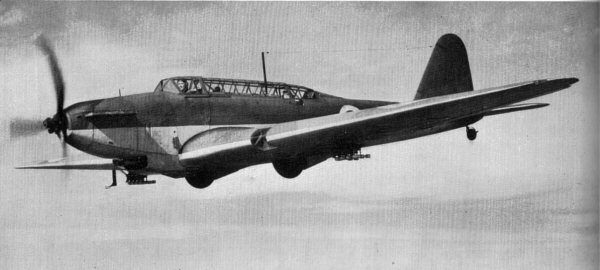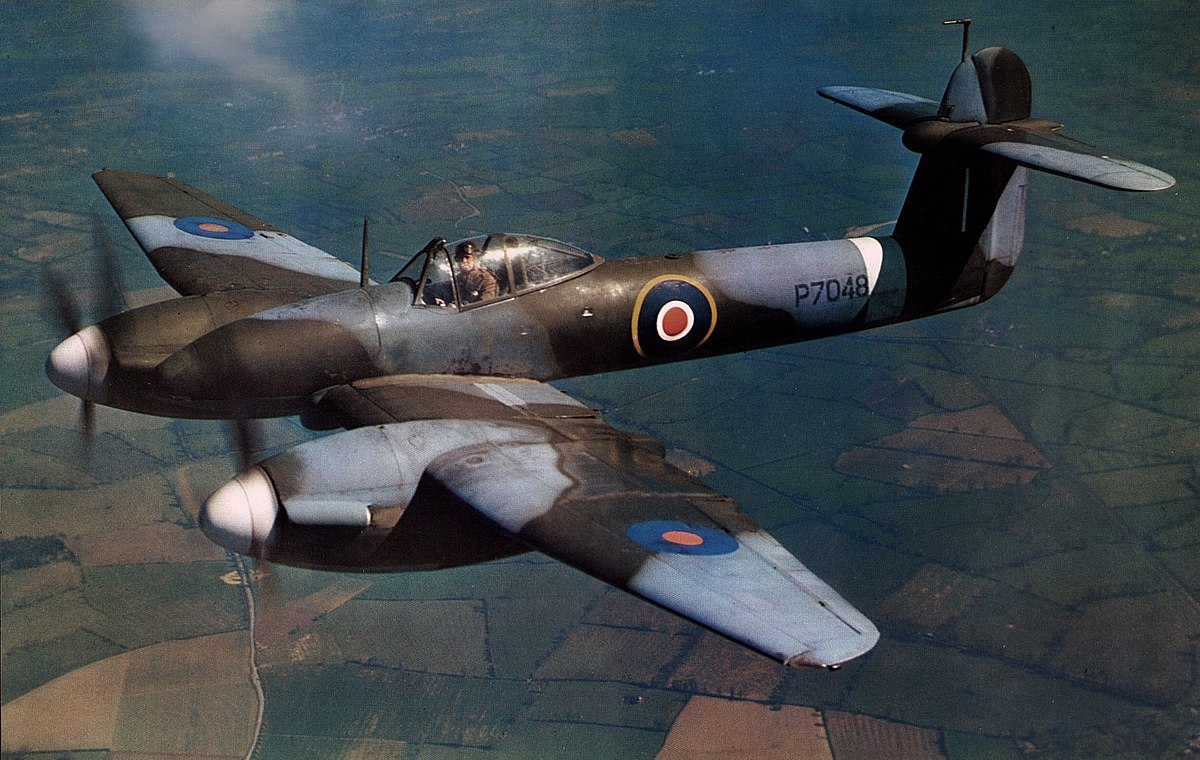Agree that the Fairey Battle would logically make an adequate torpedo bomber. Certainly no worse than most types of the day and better than many others. So no foul there.
I've been plowing through as many sources as I can of this campaign before commenting, as I didn't want to put my oar in the water before having something to contribute that hasn't already been gone over repeatedly...sometimes to death. Certainly, folks here LOVE to go over technology and weaponry with loving care and detail, so I'll tend to ignore that aspect most times from now on. Plus that end seems covered and, frankly, the Commonwealth forces, at least on the ground, had near parity or even superiority in most encounters in OTL, so that's not truly the issue in any case.
No, what I discovered was the defining issue for the Commonwealth forces in EVERY encounter with Japanese forces, and indeed even before, when trying to set up a defense plan at all, was an utter and complete LACK of command and control organization and communications at ALL levels, from high command to often even the field unit level. This was throughout the campaign and seemingly throughout the forces. Communications were slow, sloppy, or simply nonexistent. Command and control at every level often lackadaisical and informal even at the most vital of moments. That's not to bring into the utter cluster that is the complex interservice web of command needs brought on by having a naval base being defended by air power that needs air bases that need defending by the army (that also needs air cover) whose supply lines are being defended by the navy that needs top cover protection by air power...you get the idea. Getting a coherent chain of command out of THAT that everyone is going to be happy with and happily snap too quickly once the fecal matter flies is asking for a minor miracle. Not saying it can't happen, but even in France in 1944, after years of practice at it there were still issues! And that's not even throwing in the civilian government into the mix: You've got the Singapore Government, the Straits Settlements, Malaya proper, the various Rajs, Sarawak, Brunei, etc.
And, yeah, the headache that's the DEI!
All have to be juggled and accounted for as they've gotta be taken into account for the defense. ESPECIALLY Sumatra. Communication being used at all levels (thus drill, dril, and more drill), command and control (did I mention drills?), and pounding out a solid chain of command (and ensuring everyone understands they WILL be beat with it) are freaking vital.
As for the DEI, something my research turned up is that the place is NOT united on ANY level. What we tend to see as the " Nationalists" are generally (though not always) ethnic Muslim Javanese who back (as now) don't always get on well with others. Javanese, depending on the time, place, individual, and so on ranged in attitude from ambivalent to active dislike of the Dutch, but rarely active hated them. The Dutch rarely dipped into active asshole behavior by this time in their colony, and even tended towards efforts (if clumsy) towards "enlightened patronism" of a sort, increasing putting locals in positions of authority, turning over regions back to local government, and so on. The Javanese, however, weren't idiots, because they damn well knew Java itself was never going to never be anything but a Dutch ruled colony; it was the jewel in the crown, so to speak. Thus, tensions were high and few unhappy to see the Japanese show up. At first.
Not to say all other East Indians got on with the Dutch.
Nope.
Sumatra was a cluster, for example, and not just Aceh, that was just the worst hot spot. The whole place is a mess of tribes and petty kingships (Christian, Muslim, and Pagan) that either hate the Dutch or the Javanese or both. And in any case, are naturally going to look to their own interests (as anyone should).
The Hindu Balinese, right next door to Java greatly disliked the Javanese, but also had no love for the Dutch, and thus were ambivalent about the Japanese at first. The predominantly Christian Ambionese and Moluccans hated the Javanese (and were actually somewhat loyal to the Dutch), and resisted the Japanese as much as the terrain of their small islands allowed. These tough folks also made up the bulk of the native volunteers to the KNIL infantry, especially the NCOs and what native officers there were. I couldn't find ANY that turned coat.
The then pagan Melanesians of Dutch New Guinea...well, they're still to this day fighting the Javanese settlers who they see as just the latest wave of colonizers. They fought all comers: The Dutch, Japanese, Javanese...everyone. And yeah, much of the mountainous interior is unknown, quite rough, and locals often very unfriendly to everyone.
No cares too much about what the folks on Borneo think. After all, the coastal folks are either fellow Muslim Javanese or Malays and think like you, or when you go inland the pagan locals tend to just kill you and take your head rather than talk anyway. And no, I'm not exaggerating, well, not by much. The place was often largely terra incognita less than 50 miles from the coast most places, barring a few tracks, and justly famous for its unfriendly headhunters and impassable disease ridden terrain.
And we all know what a cluster-f Timor Island is...and already was then. The Muslim Timorese perhaps wisely figured resistance was foolish and just went along with the Japanese, but didn't actively support them either and so were largely left alone. The Catholic Timorese, however, actively aided the Australian Commandos and then fought a guerilla war and suffered accordingly. On the other hand it likely taught them hard lessons needed for a later war...!
I've been plowing through as many sources as I can of this campaign before commenting, as I didn't want to put my oar in the water before having something to contribute that hasn't already been gone over repeatedly...sometimes to death. Certainly, folks here LOVE to go over technology and weaponry with loving care and detail, so I'll tend to ignore that aspect most times from now on. Plus that end seems covered and, frankly, the Commonwealth forces, at least on the ground, had near parity or even superiority in most encounters in OTL, so that's not truly the issue in any case.
No, what I discovered was the defining issue for the Commonwealth forces in EVERY encounter with Japanese forces, and indeed even before, when trying to set up a defense plan at all, was an utter and complete LACK of command and control organization and communications at ALL levels, from high command to often even the field unit level. This was throughout the campaign and seemingly throughout the forces. Communications were slow, sloppy, or simply nonexistent. Command and control at every level often lackadaisical and informal even at the most vital of moments. That's not to bring into the utter cluster that is the complex interservice web of command needs brought on by having a naval base being defended by air power that needs air bases that need defending by the army (that also needs air cover) whose supply lines are being defended by the navy that needs top cover protection by air power...you get the idea. Getting a coherent chain of command out of THAT that everyone is going to be happy with and happily snap too quickly once the fecal matter flies is asking for a minor miracle. Not saying it can't happen, but even in France in 1944, after years of practice at it there were still issues! And that's not even throwing in the civilian government into the mix: You've got the Singapore Government, the Straits Settlements, Malaya proper, the various Rajs, Sarawak, Brunei, etc.
And, yeah, the headache that's the DEI!
All have to be juggled and accounted for as they've gotta be taken into account for the defense. ESPECIALLY Sumatra. Communication being used at all levels (thus drill, dril, and more drill), command and control (did I mention drills?), and pounding out a solid chain of command (and ensuring everyone understands they WILL be beat with it) are freaking vital.
As for the DEI, something my research turned up is that the place is NOT united on ANY level. What we tend to see as the " Nationalists" are generally (though not always) ethnic Muslim Javanese who back (as now) don't always get on well with others. Javanese, depending on the time, place, individual, and so on ranged in attitude from ambivalent to active dislike of the Dutch, but rarely active hated them. The Dutch rarely dipped into active asshole behavior by this time in their colony, and even tended towards efforts (if clumsy) towards "enlightened patronism" of a sort, increasing putting locals in positions of authority, turning over regions back to local government, and so on. The Javanese, however, weren't idiots, because they damn well knew Java itself was never going to never be anything but a Dutch ruled colony; it was the jewel in the crown, so to speak. Thus, tensions were high and few unhappy to see the Japanese show up. At first.
Not to say all other East Indians got on with the Dutch.
Nope.
Sumatra was a cluster, for example, and not just Aceh, that was just the worst hot spot. The whole place is a mess of tribes and petty kingships (Christian, Muslim, and Pagan) that either hate the Dutch or the Javanese or both. And in any case, are naturally going to look to their own interests (as anyone should).
The Hindu Balinese, right next door to Java greatly disliked the Javanese, but also had no love for the Dutch, and thus were ambivalent about the Japanese at first. The predominantly Christian Ambionese and Moluccans hated the Javanese (and were actually somewhat loyal to the Dutch), and resisted the Japanese as much as the terrain of their small islands allowed. These tough folks also made up the bulk of the native volunteers to the KNIL infantry, especially the NCOs and what native officers there were. I couldn't find ANY that turned coat.
The then pagan Melanesians of Dutch New Guinea...well, they're still to this day fighting the Javanese settlers who they see as just the latest wave of colonizers. They fought all comers: The Dutch, Japanese, Javanese...everyone. And yeah, much of the mountainous interior is unknown, quite rough, and locals often very unfriendly to everyone.
No cares too much about what the folks on Borneo think. After all, the coastal folks are either fellow Muslim Javanese or Malays and think like you, or when you go inland the pagan locals tend to just kill you and take your head rather than talk anyway. And no, I'm not exaggerating, well, not by much. The place was often largely terra incognita less than 50 miles from the coast most places, barring a few tracks, and justly famous for its unfriendly headhunters and impassable disease ridden terrain.
And we all know what a cluster-f Timor Island is...and already was then. The Muslim Timorese perhaps wisely figured resistance was foolish and just went along with the Japanese, but didn't actively support them either and so were largely left alone. The Catholic Timorese, however, actively aided the Australian Commandos and then fought a guerilla war and suffered accordingly. On the other hand it likely taught them hard lessons needed for a later war...!

